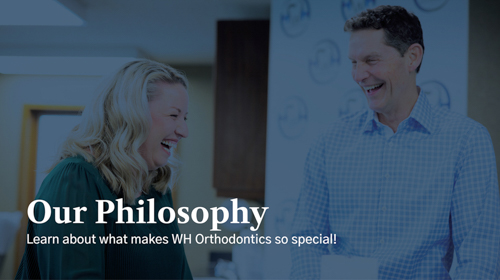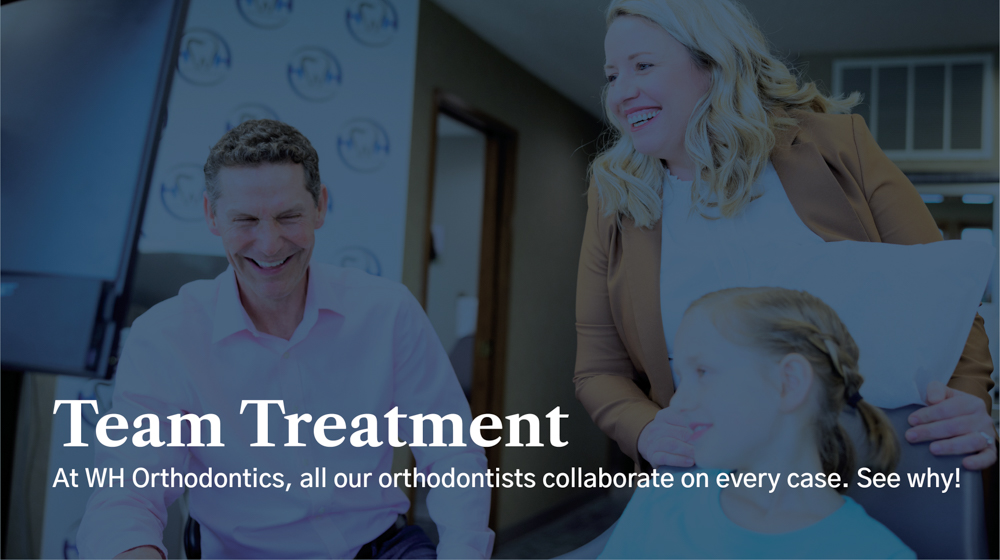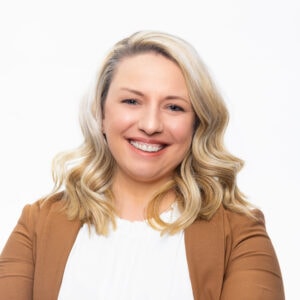Have questions about orthodontic care? Let us help! It’s incredibly important to the Wilson & Hendrickson team that our patients feel satisfied and informed.
Have Questions About Your Orthodontic Care? Let Us Help!
If you have any questions about your orthodontic care, orthodontic financing and insurance, orthodontic treatment options, or our doctors, please let us know. We’d absolutely love to help.
Of course, feel free to contact our orthodontic offices directly. We’d be happy to chat!
What Should You Expect From Your Time With Us?
Our goal is to exceed our patients’ expectations, always.
We believe you should expect the best possible orthodontic results and the best possible experience. We believe you and your family deserve the highest level of care possible. That’s why your experience matters, and that’s why we pay attention to even the most minute details.

Orthodontic FAQs
How Do I Know If My Child Needs Orthodontic Care?
This is a difficult question for LOTS of parents.
Lack of space between baby teeth, crowding, crossbites, overbites — even if your child’s teeth look straight, there may be problems that require the expertise of an orthodontist. Regular dental checkups may alert you to the need for specialized orthodontic treatment, but examination by an orthodontist is recommended for all children from the age of 7.
We offer free initial consultations during which we can assess your child and offer any recommendations. Early detection is the best prevention against future, more complicated treatment for your child. Some problems may even resolve on their own. We can help guide you, whatever your needs!
What Are Some Signs That Someone Needs Orthodontic Care?
There are many signs that you or your child could need orthodontic care. We’ll help you figure out what they are!
Some dental issues can show up at any age that could necessitate an appointment with an orthodontist for further evaluation.
Some of the symptoms include:
- Hiding your smile or trying to hide your teeth while talking
- Difficulty in chewing or biting food
- Difficulty cleaning teeth or removing food stuck between your teeth
- Frequent headaches or jaw fatigue
What Is Two-Phase Treatment And Why Does It Matter?
Two-phase treatment is an approach to a great smile at a young age. First, we work to prevent larger orthodontic issues by helping your child’s orthodontic problems while their teeth are still developing (Phase 1). Then we address problems of alignment later (Phase 2), once almost all of the permanent teeth have erupted.
Two-phase treatment isn’t a chance for orthodontists to prolong your time spent in braces or at the office — we promise! It’s simply our best way to care for your child, depending on how your child’s teeth are developing.
The first phase of treatment, Phase I, aims to treat common problems early, such as crossbites (of the front or back teeth), gap teeth, and crowding. This phase of treatment usually begins while the permanent front teeth are erupting (typically around the age of 8-9) but the back baby teeth are still in place. This phase can help turn a difficult orthodontic problem into a more manageable one. It can also greatly help improve self-confidence. We usually recommend this treatment when waiting could cause orthodontic problems or social problems to worsen.
The second phase of treatment, Phase II, is recommended after all or nearly all permanent teeth have completed eruption. This phase focuses on proper alignment that cannot be achieved with the baby teeth present.
Does Everyone Need Phase One (Phase 1) Treatment?
No!
We evaluate to find out if this will save you time, expense, and hassle down the road. But most of our patients can wait until they have all their permanent teeth to begin treatment.
Braces Hurt When I Was A Kid. Do They Hurt Now?
You can expect them to feel unusual and uncomfortable for the first few days after placement or after each adjustment. It will help to use an over-the-counter medication for pain relief.
Orthodontic technology and treatment have improved so much in recent years. We now use improved technology and appliances to achieve the same result in a shorter time than what you might remember as a kid. Everything we use and choose works to minimize your discomfort and get you through your treatment as quickly and carefully as possible.
How Long Is This Going To Take?
This is hard to say because we assess and treat on a case-by-case basis. An average timeline is about 12-24 months. Our aim is always for the highest quality in orthodontic results.
My Child Is Missing Teeth. Can They Still Get Braces?
We believe getting braces becomes even more necessary to prevent future orthodontic and dental problems when the patient has missing teeth. Several problems could result from the spaces left by missing teeth, such as the existing teeth drifting into these spaces and leaving little room for the permanent teeth to erupt. Drifting teeth can also lead to recession of the surrounding gum tissue, bone loss, and difficulty with normal dental function. If we can fix your dental alignment, this will often fix these problems. If it’s your permanent teeth that are missing, braces or Invisalign treatment can provide your dentist with the ideal space to replace the missing teeth and restore the smile you desire.
Am I Too Old For Braces?
Never! We have a number of adult patients in our practice! We’re good about making the process great for adults as well.
You may see the pace of your transformation move a little slower than a developing child’s, but you can still see amazing changes! We’ve treated patients in their 80s!
Do You Pull Teeth?
We do our best to help our patients keep all of their original teeth. Sometimes that requires Phase 1 care.
With non-extraction therapy, we aim to change the profile by manipulating the arches to make room for existing teeth rather than extracting permanent teeth.
Today’s technology means we can avoid extraction more often, but we’ll always choose the best option for the best end result and work to minimize your worries.
So Much More To The WH Orthodontics Story
Wilson & Hendrickson Orthodontics is proud to serve Kansas with amazing orthodontic care, but there's so much more to tell about the WH story.
See for yourself! →










